SintraCascaisSesimbra.com
The best independent guide to Estoril
SintraCascaisSesimbra.com
The best independent guide to Estoril
Estoril; the best sights, attractions and things to see and do in 2026
Estoril sits along the Lisbon coastline as Portugal's original resort town, a sophisticated destination where golden beaches meet early 20th-century glamour and genuine history. This former playground for exiled royalty and wartime spies has evolved into a popular holiday destination that offers far more than just sun and sand.
Located just 25 minutes by train from central Lisbon, Estoril strikes the perfect balance between beach relaxation and cultural exploration. Unlike the high-rise developments that dominate other Portuguese resort towns, Estoril maintains its low-rise elegance, with palm-lined promenades and grand villas that hint at its illustrious past.
The region encompasses more than Estoril itself, from the charming fishing town of Cascais to the dramatic Guincho coastline and the fairy-tale palaces of nearby Sintra. This ideal location makes Estoril an ideal base for exploring the best of the Lisbon coast while enjoying the relaxed atmosphere of a seaside resort.
This guide will detail the very best activities, sights, and day trips in the Estoril region, designed for tourists planning an unforgettable holiday to this wonderful town.
Related articles: Introduction to Estoril - Estoril beach guide
The Best of Estoril: An Overview
Below you'll find two lists: essential sights within Estoril itself (perfect for a day trip from Lisbon), and the top attractions in the wider region for those staying longer. Full details and practical information for each attraction are provided in the later section of this article.
Top Sights in Estoril for a Day Trip
Casino Estoril - Portugal’s largest casino by gaming area still exudes the glamour of its wartime past when spies and exiled royalty mingled in its grand halls. Ian Fleming found inspiration here for Casino Royale while observing Yugoslavian double agents at the tables.
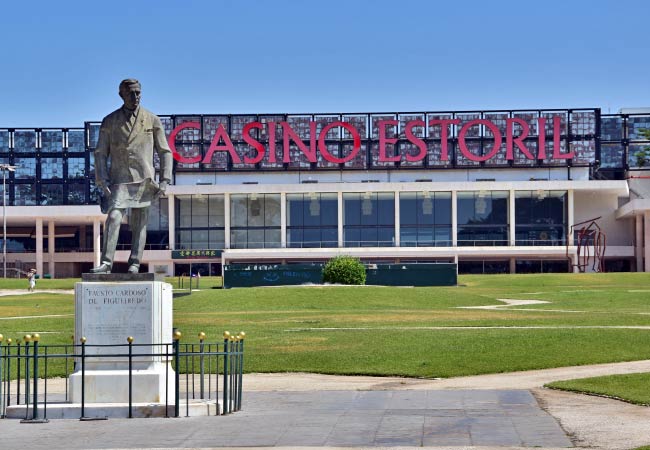
Praia do Tamariz - Estoril's main beach combines pristine golden sand and calm, clear waters, making it an ideal location for a peaceful day by the sea.
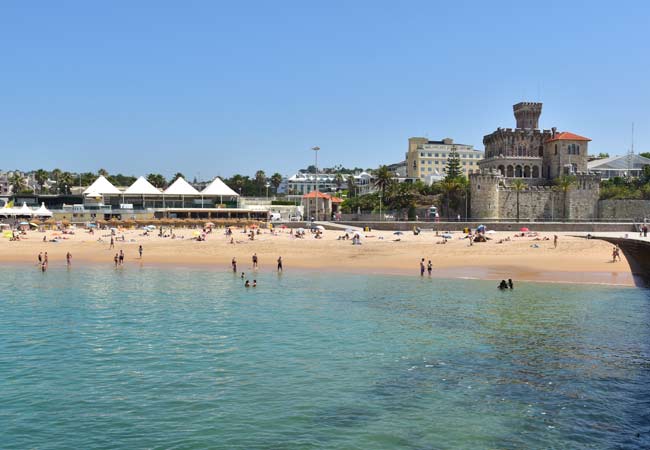
The Passeio Marítimo - A scenic 3km waterfront promenade connecting Estoril to Cascais, passing small beaches, grand 19th-century mansions, and numerous cafés and beach bars.
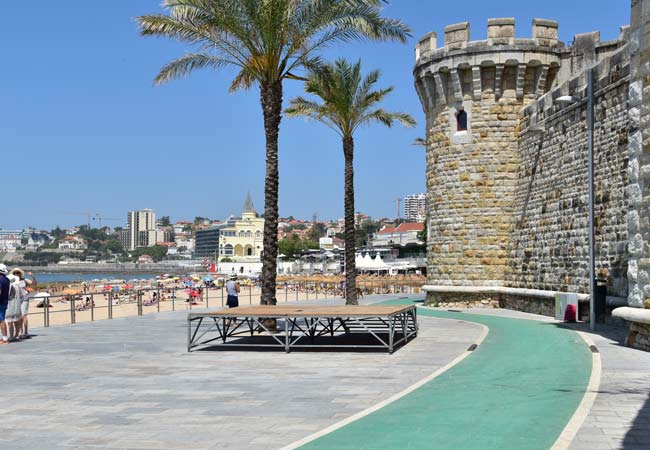
Museu da Música Portuguesa - Housed within the Monte Estoril Cultural Centre, this unexpected gem houses over 500 Portuguese musical instruments. The collection spans from medieval rebecs to modern Portuguese guitars, all displayed in an elegant historic mansion.
Relaxing on Estoril's Beaches - Beyond Tamariz, discover the several beautiful sandy beaches such as Praia da Poça and Praia de São Pedro do Estoril, all perfect for a tranquil day by the sea.
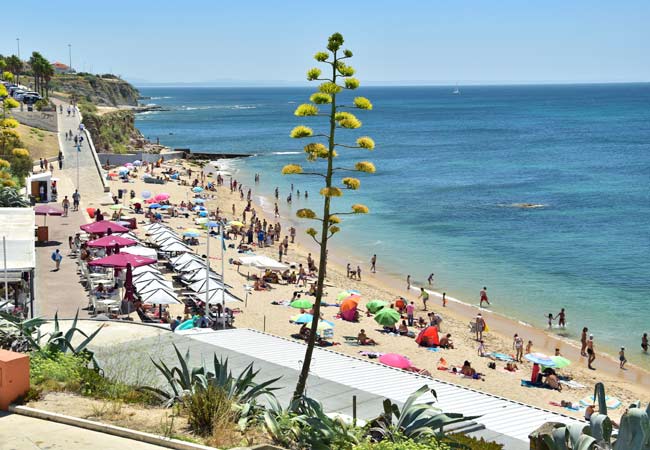
The Praia de São Pedro do Estoril
Exploring Cascais - Wander the charming, cobbled streets of this picturesque fishing town, exploring its lively marina, ancient fort and grand 19th century villas.
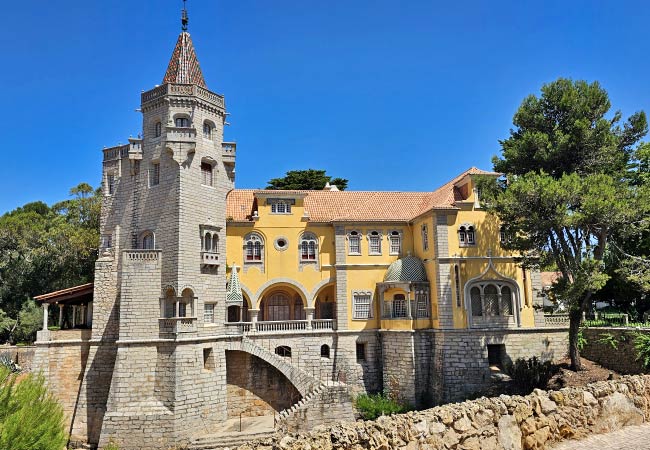
Cycling to the Boca do Inferno - Hire a bike and cycle along a dedicated coastal path to the unique cliff formation of "Hell's Mouth" and on further to the pristine beach of Praia do Guincho.
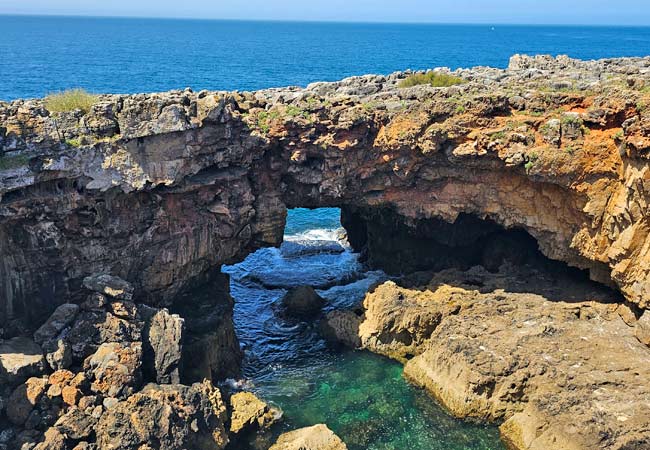
Top Attractions for a Holiday to the Estoril Region
A Day Trip to Sintra - Portugal's most enchanting town lies just 20km inland, where whimsical palaces and ancient castles rise from misty, forested hills. The colourful Pena Palace and mysterious Quinta da Regaleira make this an unmissable excursion - Guide to Sintra.
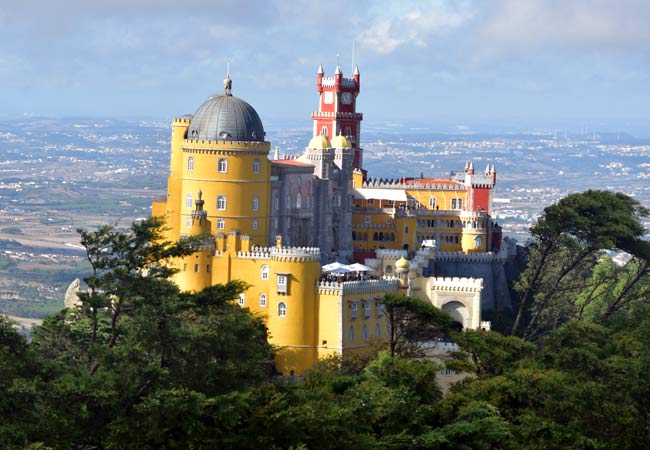
Exploring Lisbon - The Portuguese capital offers everything from historic tram rides through ancient neighbourhoods to cutting-edge restaurants and vibrant nightlife. The direct train connection makes day trips hassle-free - One day tour of Lisbon.
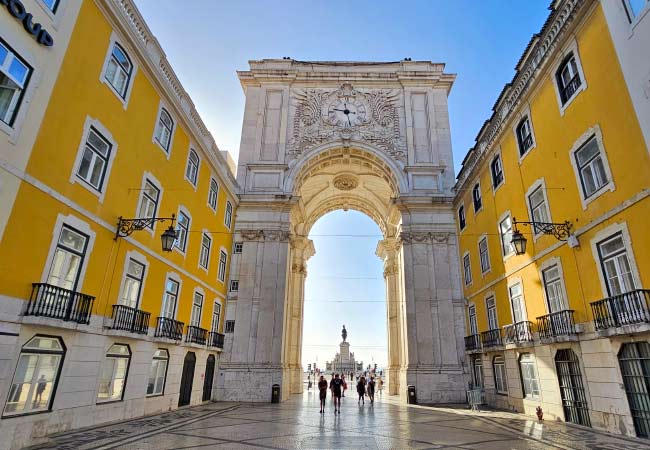
Golfe do Estoril - One of Portugal's oldest courses, dating from 1929, combines challenging play with stunning coastal views. The par-69 layout has hosted the Portuguese Open numerous times.
Surfing at Praia do Guincho - This wild Atlantic beach, 9km west, presents a complete contrast to Estoril's sheltered coastline. Powerful waves and consistent winds create ideal conditions for surfing, windsurfing, and kitesurfing.
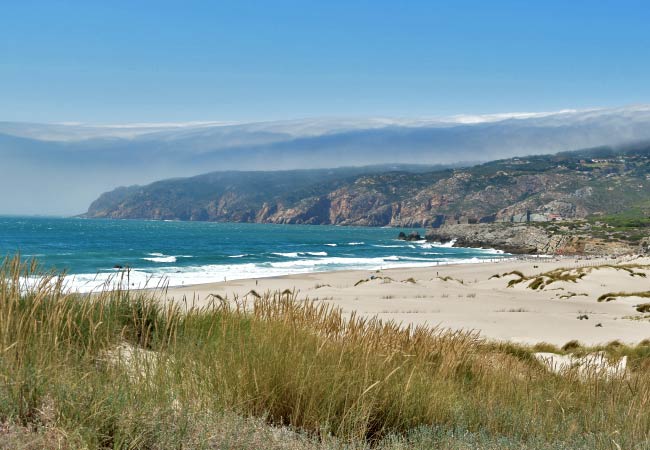
Cabo da Roca - Stand at mainland Europe's westernmost point, where 140-metre cliffs drop dramatically into the Atlantic. The lighthouse marks the place that was considered the edge of the known world until the 14th century - Cabo da Roca guide
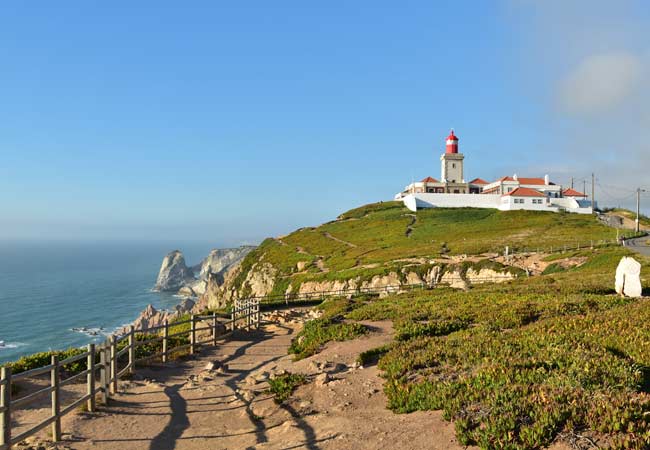
A Day Trip to Belém - This historic Lisbon district preserves Portugal's golden age of exploration. Spend a day exploring the famous monuments like the Jerónimos Monastery and Belém Tower, and taste the original Pastéis de Belém custard tarts - guide to Belem.
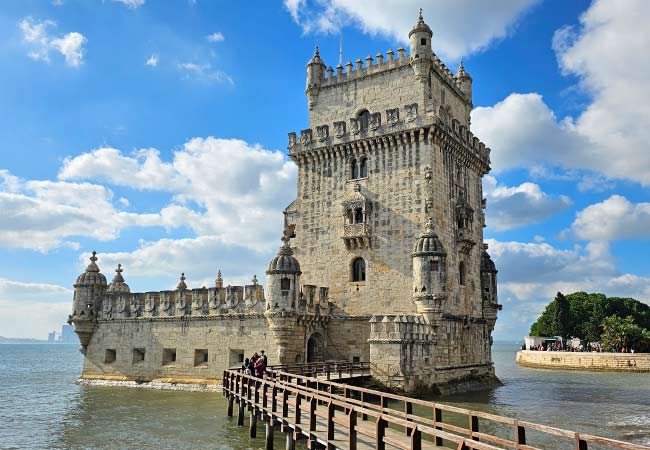
Map of the sights and attractions of Estoril
The following interactive map details the location of the sights of Estoril and the surround region. The map also includes many of the regions beaches shown by yellow markers. (Note: zoom out to see all of the markers)
Legend: 1) Casino Estoril 2) Passeio Marítimo Promenade 3) Museu da Música Portuguesa 4) Golfe do Estoril 5) Jardim do Estoril 6) Boca do Inferno 7) Museu Condes de Castro 8) Marina de Cascais 9) Cabo da Roca 10) Palácio Nacional da Pena 11) Quinta da Regaleira 12) Sintra 13) Lisbon 14) Belém
Beaches: 15) Praia do Tamariz 16) Praia de São Pedro do Estoril 17) Praia da Poça 18) Praia da Duquesa 19) Praia de Carcavelos 20) Praia do Guincho
Detailed Descriptions of Estoril's Sights & Attractions
Casino Estoril
The Casino Estoril stands as Europe's largest casino by gaming floor area, but its significance extends far beyond gambling. This Art Deco landmark opened in 1931, and during Portugal's neutral stance in WWII, quickly becoming a hotbed of international intrigue where Allied and Axis spies rubbed shoulders at the gaming tables.
Ian Fleming, then working for British Naval Intelligence, frequented the casino in 1941. His experiences watching Yugoslavian double agent Duško Popov (allegedly the inspiration for James Bond) gambling with German intelligence funds directly inspired the casino scenes in his first novel, Casino Royale.
Beyond gambling, the complex includes a 1,000-seat auditorium presenting nightly entertainment ranging from international music acts to magic shows. The Chinese restaurant on the top floor offers panoramic views over the gardens to the sea. An art gallery in the lobby regularly features works by contemporary Portuguese artists.

Passeio Marítimo
Passeio Marítimo is a scenic 3km long promenade that connects Estoril to Cascais. Built in the 1940s and renovated in 2009, the wide pedestrian and cycle path accommodates everyone from morning joggers to evening strollers.
Starting from São João do Estoril station, the promenade passes a succession of small beaches and elegant early 20th-century villas, many built by aristocrats fleeing European conflicts. Modern sculptures dot the route, including works celebrating Portugal's maritime heritage. Waterfront cafés and bars provide refreshment stops, with Esplanada Tamariz being particularly popular. The promenade ends at Cascais Marina, leading directly into the heart of this delightful town.
The entire walk takes 30-45 minutes at a leisurely pace, though most visitors spend longer exploring the beaches and stops along the way.
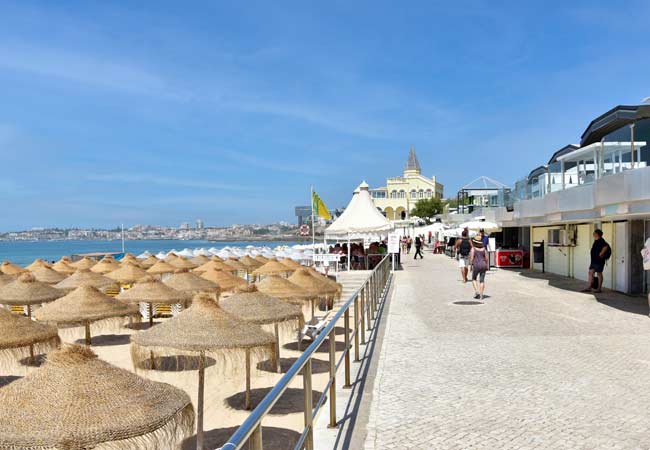
Cascais
Originally a fishing village, Cascais transformed into a royal summer retreat when King Luís I made it his summer residence in 1870. This royal patronage attracted the Portuguese nobility, whose grand villas still line the seafront.
Modern Cascais balances its fishing heritage with upscale tourism. The fish market still operates daily, though now shares the harbour with luxury yachts. The historic center preserves its traditional Portuguese character with cobbled pedestrian streets and small squares. Key sights include the Cidadela fortress (now an arts center), the Condes de Castro Guimarães museum in a neo-Gothic palace, and the dramatic Casa de Santa Maria designed by renowned architect Raul Lino.
West of Cascais, the coastline becomes wilder, with the unique cliff formation of Boca do Inferno (Hell's Mouth) and the windswept beach of Praia do Guincho
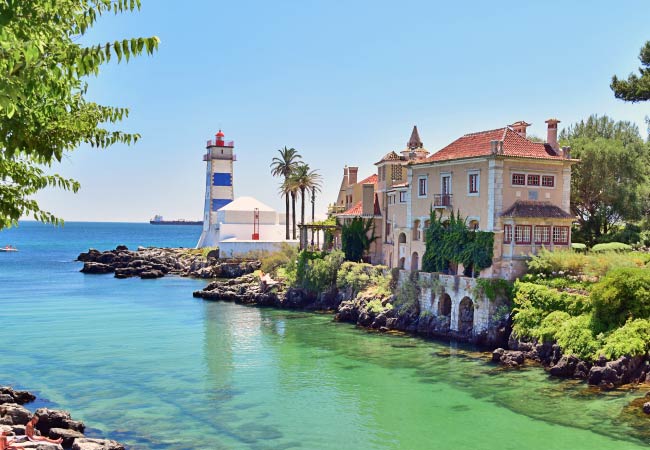
The Beaches of Estoril
Estoril's beaches offer surprising variety within a compact area. The main beach, Praia do Tamariz, stretches 200 meters in front of the casino and railway station. The golden sand beach offers excellent facilities including showers and changing rooms, while several beach bars serve everything from morning coffee to sunset cocktails.
Located 1km east of Estoril's centre, Praia de São Pedro do Estoril offers a more authentic Portuguese beach experience. This quieter stretch of coast attracts predominantly local families and residents, creating a relaxed atmosphere.
For those seeking space, Praia de Carcavelos lies 3km east and is accessible by train. This vast beach stretches for nearly 1.5km and rarely feels crowded, even in peak summer. The consistent waves attract surfers year-round, while the extensive facilities include volleyball courts, surf schools, and numerous beach bars.
Further north lies Praia do Guincho, a magnificent beach within the Sintra-Cascais Natural Park. Fully exposed to Atlantic swells, Guincho offers world-class conditions for surfing, windsurfing, and kitesurfing.
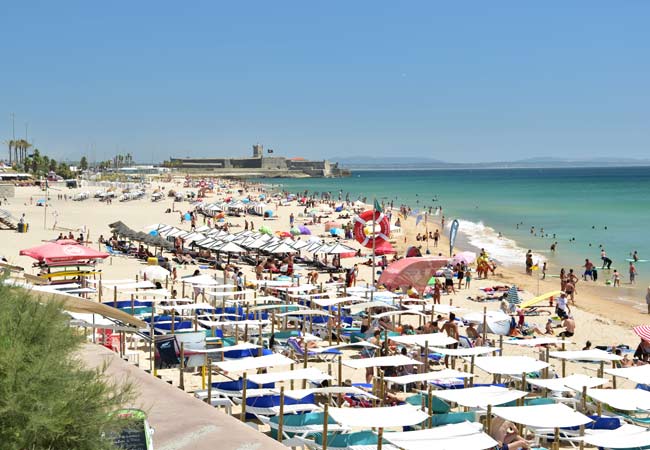
A Day Trip to Sintra
No visit to Estoril is complete without exploring this UNESCO World Heritage site. Just 20km inland, Sintra's microclimate creates a mystical atmosphere where morning mists cling to forested hillsides dotted with fantastic palaces and mysterious estates.
The town divides into several areas. Sintra-Vila, the historic center, clusters around the National Palace with its distinctive conical chimneys. Higher up, the Pena Palace is a riot of colour combining Gothic, Moorish, and Manueline elements in delightful excess.
The ancient Castelo dos Mouros (Moorish Castle) snakes along the mountain ridge above Sintra. Dating from the 8th century, the castle’s battlements offer the region's best views, stretching from the Atlantic to Lisbon.
Down in the valley, the Quinta da Regaleira presents a different wonder. This early 20th-century estate hides initiation wells, underground tunnels, and symbolic gardens designed around Masonic and Knights Templar mythology. The highlight is the Initiation Well, a 27-meter spiral staircase descending into the earth.

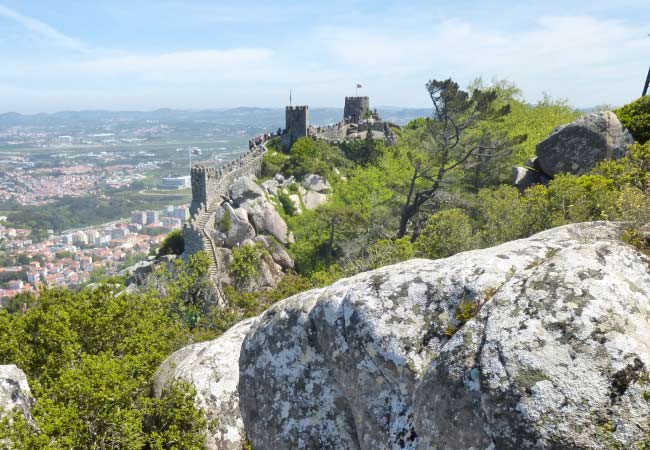
Museu da Música Portuguesa
The Museu da Música Portuguesa remains one of Estoril's best-kept secrets, tucked away within the Monte Estoril Cultural Centre. This specialized museum houses an impressive collection of over 500 Portuguese musical instruments, offering visitors a unique window into Portugal's rich musical heritage.
The collection spans centuries of Portuguese musical tradition, from medieval rebecs to modern Portuguese guitars. The Portuguese guitar, that distinctive 12-stringed instrument essential to fado music, features prominently throughout the displays. These pear-shaped instruments, with their characteristic round sound hole and distinctive tuning mechanism.
Medieval instruments like the rebec, a bowed string instrument that preceded the violin, demonstrate the deep historical roots of Portuguese music. These early instruments reveal the Moorish and Mediterranean influences that shaped Portugal's musical development over centuries.
A Day Trip to Lisbon
The Cascais train line makes Lisbon easily accessible from Estoril. The 25-minute journey terminates at Cais do Sodré station, perfectly positioned for exploring the capital.
From Cais do Sodré, take the famous Tram 28 as an ideal introduction to Lisbon's historic neighbourhoods. This vintage yellow tram climbs through Bairro Alto, past the Sé Cathedral, through the narrow streets of Alfama, and up to the Graça viewpoint.
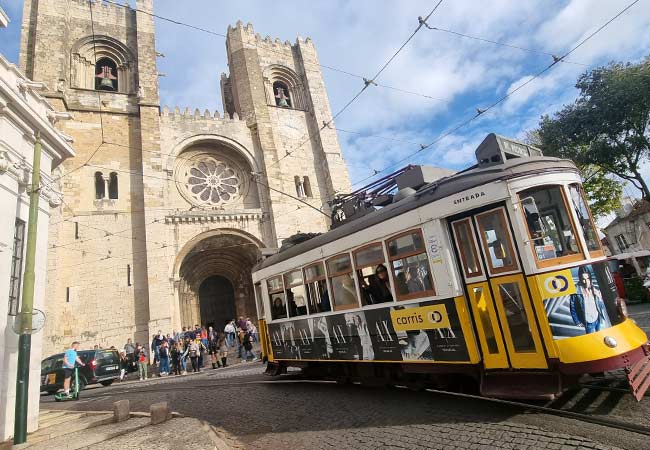
Alfama is Lisbon's oldest district, having survived the 1755 earthquake, it preserves a medieval street pattern. Getting lost here is part of the charm, as narrow alleys open onto small squares where laundry hangs overhead and elderly residents chat from doorways. The Feira da Ladra flea market (Tuesdays and Saturdays) sprawls around the Santa Engrácia church, offering everything from vintage azulejo tiles to mysterious naval instruments.
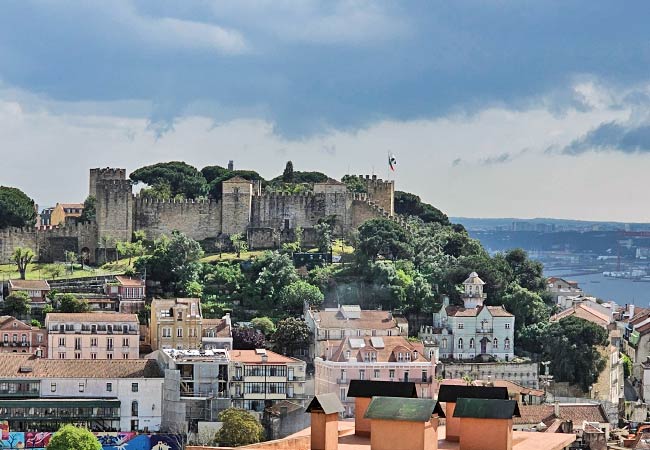
In contrast to Alfama's medieval maze, the Baixa district presents Lisbon's grand 18th-century redesign following the devastating earthquake. The Marquês de Pombal rebuilt this lower town with wide streets in a rigid grid pattern - revolutionary urban planning for its time. The Praça do Comércio opens onto the Tagus River with its distinctive yellow buildings and triumphal arch. This vast square, where kings once welcomed visitors arriving by ship, now hosts events and provides river views from waterfront cafés.
From Praça do Comércio, the pedestrianised Rua Augusta leads north through the heart of Baixa. Street performers, tourist restaurants, and traditional shops line this bustling thoroughfare. The Santa Justa Elevator, a 45-metre neo-Gothic iron tower, connects Baixa to the Carmo district above.
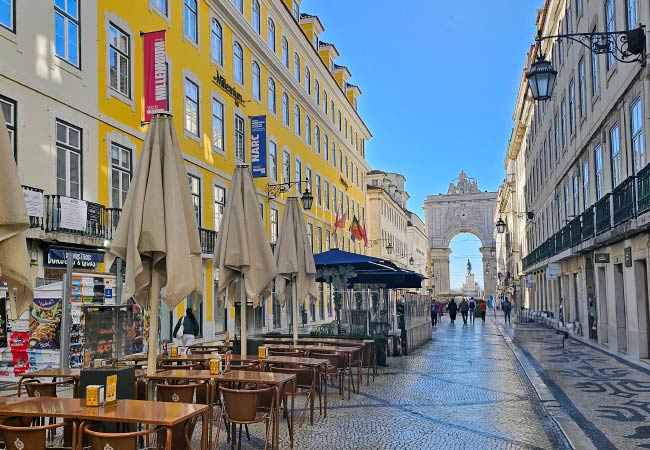
Modern Lisbon shines in neighbourhoods like Príncipe Real and the revitalised Cais do Sodré district. Príncipe Real attracts Lisbon's design-conscious crowd with concept stores, independent galleries, and restaurants serving contemporary Portuguese cuisine. The neighbourhood's leafy square centres around a massive cedar tree whose spreading branches require metal supports.
Golf on the Estoril Coast
The Estoril region established itself as Portugal's premier golf destination long before the Algarve's development. The combination of year-round mild weather, scenic courses, and proximity to Lisbon attracts players from across Europe. Seven courses lie within 20 minutes of Estoril, ranging from historic championship layouts to modern links-style challenges.
Estoril Golf Club, the region's oldest course, opened in 1929 under the patronage of the exiled Prince of Wales (later Edward VIII). Designed by Mackenzie Ross, this par-69 course winds through eucalyptus and pine trees just 2km from Estoril center. The relatively short 5,245-meter layout requires accuracy over distance, with narrow fairways punishing wayward drives.
For a completely different experience, Oitavos Dunes Golf Course near Guincho presents a modern links challenge. Designed by Arthur Hills in 2001, this par-71 course integrates naturally into the coastal dune system. The Atlantic winds that make Guincho beach famous for windsurfing create constantly changing playing conditions. Holes 14-16 run along the ocean, where the sound of crashing waves accompanies play.
Other notable courses include Quinta da Marinha (Robert Trent Jones design with ocean views), Penha Longa (27 holes including a 9-hole course designed by Nicklaus), and Belas Clube de Campo (Rocky Roquemore design in rolling hills).
Day Trip to Belém
Belém deserves special attention as one of Lisbon's most historically significant districts. This riverside neighbourhood, easily reached by direct train from Estoril, concentrates Portugal's golden age into a walkable area packed with monuments, museums, and the world's best custard tarts.
The district's monuments celebrate Portugal's Age of Discovery when tiny Portugal established the first global empire. The Jerónimos Monastery stands as the supreme example of Manueline architecture, a uniquely Portuguese style combining late Gothic with maritime motifs.
The Belém Tower once defended Lisbon's harbour. Built between 1514-1520, this fortified tower combines defensive features with decorative Manueline elements. The rhinoceros carved below one turret commemorates an Indian rhino that briefly lived in Lisbon.
Between the monastery and tower stands the imposing Padrão dos Descobrimentos (Monument to the Discoveries). This 52-metre concrete monument from 1960 celebrates Portuguese exploration with statues of 33 historical figures led by Prince Henry the Navigator.
The National Coach Museum houses the world's finest collection of historical carriages, including impossibly ornate baroque coaches that seem designed for fairy tales rather than transportation.
Beyond these historic monuments, Belém's modern attractions include the acclaimed MAAT (Museum of Art, Architecture and Technology) and the Belém Cultural Centre. However, no visit to Belém is complete without one essential experience: pastéis de nata from Pastéis de Belém. This bakery has produced custard tarts since 1837 using a secret recipe originating from Jerónimos monks.

Discover more of Estoril and the Lisbon region
























